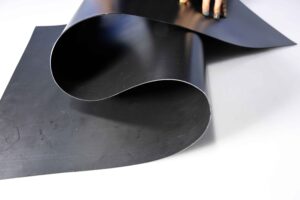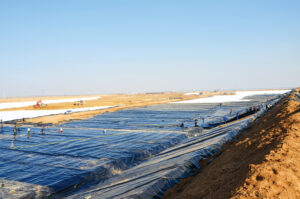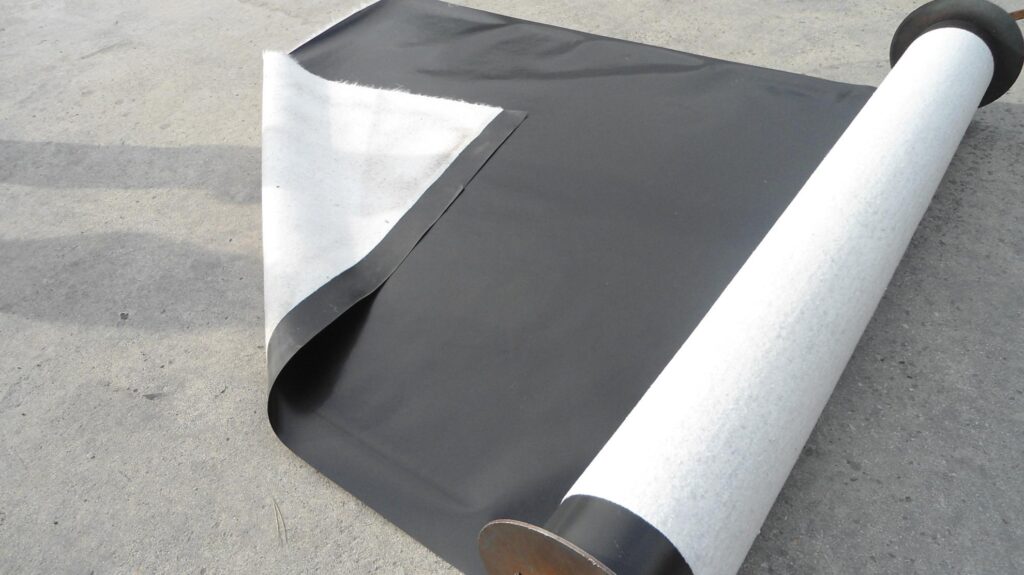What are the types of surface types of geomembranes?
Geomembrane is an important material used in civil engineering and environmental protection, mainly for anti-seepage, isolation, and reinforcement.

The surface of geomembranes usually has the following forms:
Smooth surface: The surface of some geomembranes is smooth, which is to reduce the friction force of water flow on the surface and improve its anti-seepage effect. Smooth surfaces can reduce the adhesion of geomembranes to other materials and increase their sliding performance in soil.
Rough surface: Some geomembranes are designed to have a rough surface, which can improve the friction between the geomembrane and the soil and increase its anti slip performance in the soil. The design of rough surfaces helps to better integrate the geomembrane with the soil and enhance the isolation effect.
Handle shaped surface: The surface of the geomembrane is sometimes designed as a handle shape, which can increase the mechanical anchoring effect between the geomembrane and the soil, improve the tensile strength and deformation resistance of the geomembrane. The design of the handle like surface helps to better fix and stabilize the geomembrane in the soil.
In summary, the surface design of geomembranes can be adjusted according to specific engineering needs to achieve better anti-seepage, isolation, and reinforcement effects. Different surface forms can play their due role in different geotechnical engineering.

HDPE geomembrane is a commonly used geosynthetic material with good anti-seepage performance and chemical stability.
The following are some characteristics and applications of HDPE geomembrane:
Features:
High density polyethylene (HDPE) is a polymer with low permeability and good anti-seepage performance.
High strength, good flexibility, high tensile strength and tear resistance, suitable for use in different engineering environments.
Good chemical resistance, able to resist the erosion and corrosion of common chemicals, acids, alkalis, and organic solvents in the soil.
It has good aging resistance and can resist the effects of ultraviolet radiation, oxidation, and climate change, maintaining long-term stability.
Construction is convenient and can be connected through welding, bonding, or mechanical connections to form a continuous impermeable barrier.
Application field:
Hydraulic engineering: such as anti-seepage embankments, water tanks, rivers, reservoirs, etc.
Environmental engineering: such as landfill, sewage treatment plant, waste storage site, etc.
Road engineering: such as anti-seepage layers and soil stabilization layers for highways and railways.
Agricultural fields: such as channel lining, irrigation systems, water tank anti-seepage, etc.
HDPE geomembrane is suitable for various soil and rock environments, providing reliable anti-seepage effects and protecting soil and water resources from the hazards of leakage.
When using HDPE geomembrane, it is necessary to select appropriate membrane thickness and specifications based on specific engineering needs, and install and connect them in accordance with relevant design specifications and construction requirements to ensure their performance and effectiveness
Production process of geomembrane
Material preparation: Select high-density polyethylene (HDPE) as the main raw material, and carry out material proportioning, color blending, and other work.
Forming extrusion: HDPE particles that have been mixed and plasticized are heated and extruded through an extruder to form continuous thin film sheets.
Stretch width setting: The extruded film is stretched through a roller to make it thinner and reach the desired width. At the same time, by controlling temperature and speed, the film has a certain tensile strength and stability.
Cooling solidification: The stretched geotextile film is rapidly cooled through a cooling device to solidify and maintain its corresponding shape and performance.
Quality inspection: Conduct quality inspection on the geomembrane, including thickness measurement, tensile strength testing, tear strength testing, etc., to ensure that the product meets the specified technical indicators and quality requirements.
Cutting and coiling: Cut and coiling the geomembrane that meets the requirements through cutting equipment to meet the specifications and lengths required by different projects.
Packaging and storage: The rolled geotextile film is packaged, usually shipped or stored in drums, while paying attention to measures such as moisture, dust, and rodent prevention.
Throughout the production process, it is necessary to control parameters such as raw material quality, extrusion temperature, and extrusion speed to ensure the physical properties and quality stability of the geomembrane.
In addition, quality monitoring and inspection during the production process are also important links to ensure product quality. Different manufacturers may have differences in details, but the above process is a general geotextile film production process.
About Tinhy
Established in 2002, Tinhy’s teams are focusing on manufacturings, marketing, installations, applications, and R&D of geosynthetics. We now have 300+ experienced staff and operate 25+ advanced production lines and provided services to customers from 30+ countries.
Contact Us
[wpforms id=”40″]


